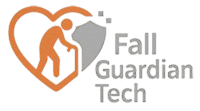Master life-saving actions to take within the “golden 10 minutes” after a fall. Learn evidence-based self-assessment, safe movement techniques, and emergency signaling aligned with AHA/CDC guidelines.
🆘 Immediate Post-Fall Action Plan
1. Self-Assessment (60 Seconds)
- Consciousness Check:
❓ “Can I say my name and location?”
❓ “Do I know what day it is?” - Pain Scan:
🔍 Neck/back → DO NOT MOVE
🔍 Hip/wrist → Stabilize joint
🔍 Head impact → Check for bleeding
CDC: 89% of fatal falls involve delayed injury recognition
2. Emergency Signaling
- Mobile Users:
📱 Program ICE (In Case of Emergency) contacts
📱 Use medical alert apps with auto-detection (e.g., Apple Fall Detection) - Landline Users:
📞 Keep cordless phone/panic button in high-risk zones (bathroom/bedroom)
📞 Use whistle/horn within reach (110 dB minimum)
3. Safe Movement Protocol
Step-by-Step Emergency Response Protocol for Seniors After a Fall
- Initial Injury Assessment
Begin by thoroughly assessing all visible and reported injuries. Check for:- Head trauma (bleeding, dizziness, confusion)
- Spinal pain or limited mobility
- Joint swelling/dislocation
- Open wounds or suspected fractures
- Critical Decision Point: Spinal Injury Check
Ask the senior: “Does your back/neck feel painful or tender?”- If YES:
- Immobilize immediately: Keep the body still in current position
- Signal for help: Use medical alert button/wearable device
- Prevent further injury: Avoid any movement until EMS arrives
- If NO:
Proceed with controlled movement sequence
- If YES:
- Controlled Movement Sequence
a. Lateral Rolling Technique- Turn onto side using elbow support
- Bend top knee for stability
- Keep head aligned with spine
- Push up onto hands and knees
- Maintain shoulder-width stance
- Distribute weight evenly
- Move toward nearest sturdy surface (chair/bed)
- Keep knees protected during crawling
- Use wall for balance if available
- Slide hips to edge of chair
- Grasp armrests firmly with both hands
- Push upward while straightening legs
- Maintain back straight during ascent
- Post-Rise Safety Protocol
- Remain seated for 1-2 minutes to prevent orthostatic hypotension
- Perform gentle neck/shoulder stretches
- Contact caregiver or EMS if dizziness persists
🩹 Injury-Specific First Aid
| Injury Type | Immediate Action | Danger Signs |
|---|---|---|
| Head Impact | Apply ice pack wrapped in cloth | Unequal pupils/vomiting |
| Bleeding Wound | Press clean cloth × 10 mins | Soaking through fabric |
| Suspected Fracture | Immobilize with magazines/boards | Visible deformity |
| Chest Pain | Chew 325mg aspirin | Crushing pressure |
Critical: Never give food/liquid to potentially unconscious person
📞 911 Communication Script
Provide:
- Exact address + access code
- “Senior fell [height] onto [surface]”
- Consciousness level
- Breathing status
- Suspected injuries
- Medications list location
Example:
“911, I fell in bathroom. Conscious but dizzy. Possible hip fracture. Meds in kitchen drawer. Front door unlocked.”
🛡️ Post-Fall Recovery Kit Essentials
- Floor-Level Kit:
- Emergency blanket
- Bottled water
- Pain relievers (acetaminophen only)
- Charged power bank
- Wall-Mounted:
- Trauma shears (cut clothing if needed)
- Chemical cold packs
- Blood-stop gauze
❓ Critical FAQs
Q: Should I get up immediately if uninjured?
A: ❗ No! Rest 5-10 mins to prevent orthostatic hypotension falls.
Q: How to help fallen senior with dementia?
A: Use calm voice → “Can you wiggle toes?” → Slide blanket under → Wait for EMS.
Q: Medicare-covered post-fall services?
A: Part B covers:
- ER co-pay waived if admitted
- Physical therapy evaluation
- Home safety assessment
Keywords Integration:
- Primary: senior fall emergency response
- Secondary: elderly first aid for falls, post-fall protocol
- Semantic: 911 script for falls, senior injury assessment
“The first 10 minutes determine recovery trajectory. Calm, systematic action saves lives.” — American Geriatrics Society
⚠️ Resource: Download AHA’s Senior Fall Response Guide (heart.org/fallresponse)
Sources: CDC Fall Response Protocol 2023, AHA First Aid Guidelines, NIA Fall Recovery Kit Standards
